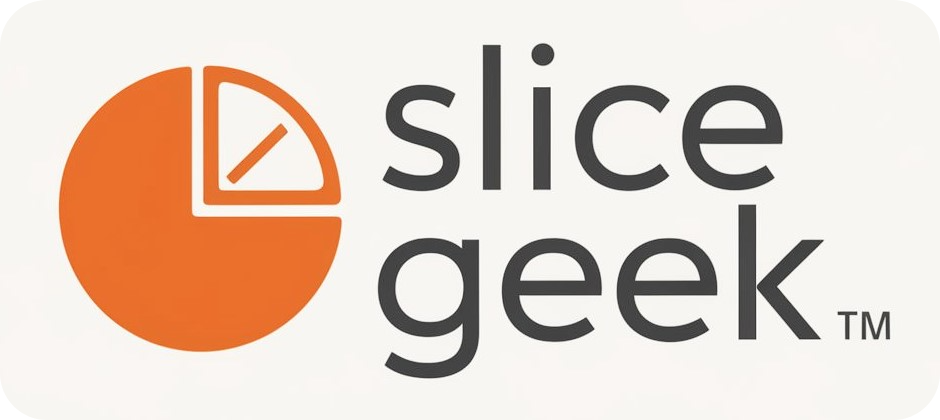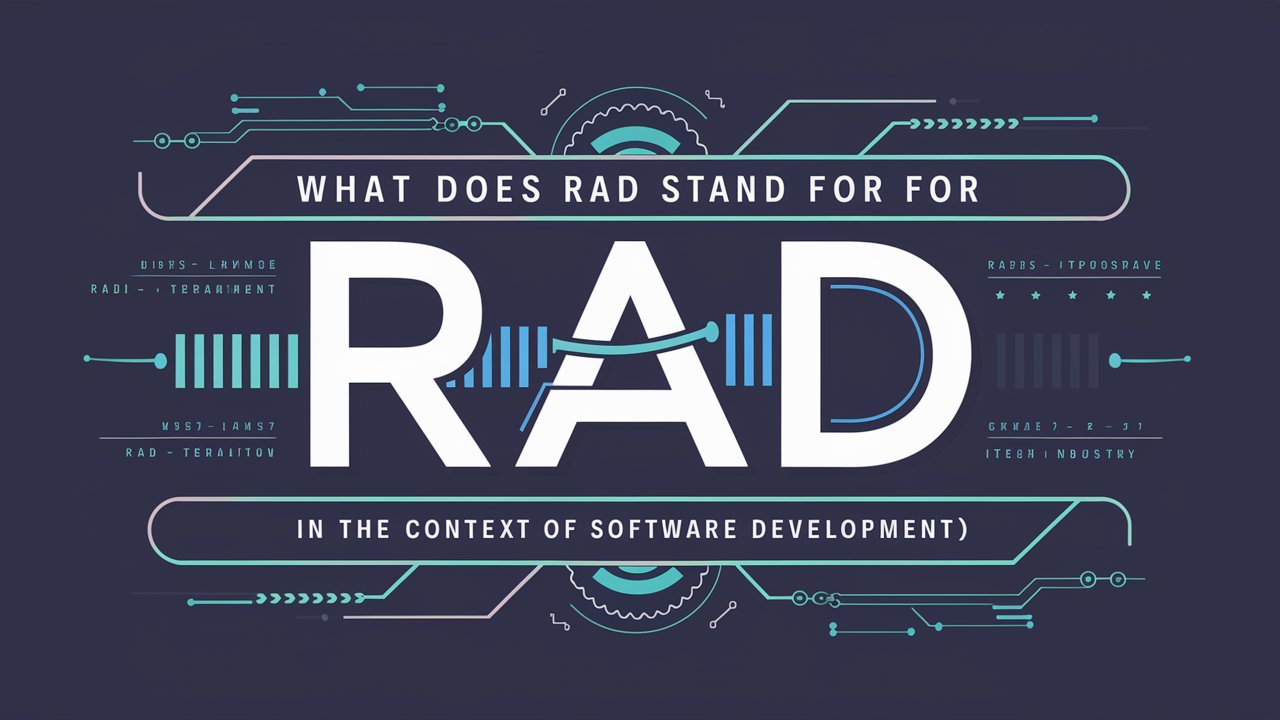In the dynamic world of software development, methodologies and frameworks come and go, but some stand out for their innovative approaches to solving problems. One such methodology is RAD, which stands for Rapid Application Development. This approach has significantly influenced how software projects are managed, emphasizing speed, flexibility, and user involvement over the more rigid structures of traditional development methods. In this blog, we’ll explore what RAD means in software development, why it matters, and how it compares to other methodologies.
Rapid Application Development: A Brief Overview
Rapid Application Development is a software development methodology that emerged in the 1980s as a response to the need for faster and more flexible development processes. Traditional methods, like the Waterfall model, often required extensive planning and a sequential approach to development, which could be time-consuming and rigid. In contrast, RAD prioritizes the rapid creation of prototypes and iterative feedback, allowing developers to adjust and improve the software as they progress.
This methodology was introduced as a solution to the limitations of conventional approaches that often left little room for changes once development had begun. By focusing on rapid prototyping and active user participation, RAD enables teams to deliver functional software quickly, even as requirements evolve during the development process.
The Core Principles of RAD
At the heart of RAD are a few guiding principles that set it apart from other methodologies. These principles emphasize speed, adaptability, and user involvement, which collectively enable the rapid delivery of software that meets user needs.
User Involvement
One of the defining characteristics of RAD is the emphasis on user involvement throughout the development process. Rather than waiting until the end of a project to gather feedback, RAD incorporates user input from the beginning and throughout each phase of development. This continuous engagement ensures that the final product closely aligns with user expectations and can adapt to changing requirements as they arise.
Prototyping
Prototyping plays a central role in the RAD methodology. Instead of developing the entire software in one go, RAD advocates for the creation of prototypes—working models of the software that demonstrate key features and functionality. These prototypes are built quickly and are refined through multiple iterations based on user feedback. This iterative process helps identify potential issues early on, reducing the risk of costly redesigns later in the project.
Iterative Development
RAD relies on an iterative development approach, where the software is developed in small, manageable increments. Each iteration involves a cycle of planning, designing, coding, and testing, followed by user feedback. This cycle repeats until the software meets all specified requirements. The iterative nature of RAD allows for continuous improvement and refinement, making it easier to accommodate changes and new features as the project evolves.
Time Efficiency
In the RAD framework, time efficiency is achieved by setting fixed, short timeframes for tasks and deliverables. This approach, known as time-boxing, helps prevent projects from becoming drawn out and encourages developers to focus on delivering functional components within a specified period. By establishing clear deadlines, RAD helps manage the scope of the project and keeps development on track.
Component Reusability
Another important aspect of RAD is the emphasis on reusing existing software components. By leveraging pre-built modules, libraries, and templates, developers can accelerate the development process and ensure consistency across projects. This reuse of components not only saves time but also enhances the reliability of the final product.
The Advantages of RAD
Rapid Application Development offers several distinct advantages, particularly for projects where speed and flexibility are crucial. Understanding these benefits can help organizations decide when RAD is the appropriate methodology for their needs.
Speed to Market
One of the most significant benefits of RAD is its ability to deliver functional software quickly. By focusing on rapid prototyping and iterative development, RAD enables teams to produce working versions of the software much faster than traditional methods. This is particularly beneficial in industries where being first to market can provide a significant competitive advantage.
Flexibility and Adaptability
The iterative nature of RAD allows for greater flexibility compared to more rigid development methodologies. As user feedback is continuously integrated into the development process, the software can evolve to meet changing needs and requirements. This adaptability reduces the risk of project failure and ensures that the final product is more closely aligned with user expectations.
User-Centric Development
RAD’s emphasis on user involvement leads to higher levels of user satisfaction. By involving users throughout the development process and continuously incorporating their feedback, RAD ensures that the final product meets their needs more effectively. This user-centric approach reduces the likelihood of major issues or dissatisfaction after deployment.
Risk Mitigation
RAD helps mitigate risks by identifying and addressing potential issues early in the development process. Through continuous testing and user feedback, problems can be resolved before they escalate into more significant challenges. This proactive approach to risk management contributes to the overall success and stability of the project.
Cost Efficiency
While RAD may require a higher level of user involvement and resource allocation, it can ultimately lead to cost savings. The rapid prototyping process helps prevent costly rework by catching issues early, and the reuse of existing components reduces development time and effort. These factors contribute to a more cost-effective development process overall.
Comparing RAD with Traditional Development Methodologies
To fully appreciate the value of RAD, it’s helpful to compare it with more traditional development methodologies, such as the Waterfall model and Agile.
Waterfall Model
The Waterfall model is a linear, sequential approach to software development. Each phase of the project—requirements gathering, design, implementation, testing, and maintenance—must be completed before moving on to the next. While this method provides a clear structure and is easier to manage, it lacks the flexibility to accommodate changes once a phase is completed. This rigidity can lead to challenges if requirements evolve during the development process.
Agile Methodology
Like RAD, Agile methodology emphasizes flexibility, iterative development, and user involvement. However, Agile is broader in scope, encompassing various frameworks such as Scrum and Kanban. Agile focuses on continuous improvement across the entire development lifecycle, whereas RAD specifically prioritizes rapid prototyping and user feedback. While both methodologies share similarities, RAD is particularly well-suited for projects where speed and rapid iteration are paramount.
Challenges and Considerations of RAD
While RAD offers numerous advantages, it also comes with its own set of challenges. Organizations considering RAD should be aware of these challenges to ensure successful implementation.
Resource Intensive
The speed and iterative nature of RAD require a significant commitment of resources, including highly skilled developers and active user participation. Organizations must be prepared to allocate the necessary time, personnel, and tools to support the RAD process effectively.
Managing User Expectations
Because RAD involves continuous user involvement, there is a risk of scope creep, where the project expands beyond its original objectives due to evolving user feedback. Clear communication and effective time management are essential to keep the project on track and manage user expectations.
Not Suitable for All Projects
While RAD is ideal for projects with dynamic requirements and tight deadlines, it may not be the best fit for large, complex projects that require extensive planning and coordination across multiple teams. For such projects, more structured methodologies may be more appropriate.
Conclusion
Rapid Application Development (RAD) is a powerful methodology that has reshaped how software projects are approached. By prioritizing speed, flexibility, and user involvement, RAD offers a compelling alternative to traditional development methods, particularly for projects where rapid delivery and adaptability are critical. However, like any methodology, RAD requires careful planning, resource allocation, and commitment from all stakeholders to be successful.
As the software development landscape continues to evolve, RAD remains a valuable tool for teams looking to stay agile and responsive in a fast-paced world. Whether you’re developing a new application or enhancing an existing one, understanding and leveraging the principles of RAD can lead to more successful and user-centric outcomes.





